In 1987, the United Nations publication, “Our Common Future,” also known as the Brundtland Report, first popularized the concept and definition of sustainable development.
“Sustainable development is development that meets the needs of the present without compromising the ability of future generations to meet their own needs.”
Today, the importance of sustainable development is widely understood and acknowledged. Even so, it’s still the exception, not the rule. As we build, so shall we live: our current unsustainable ways are undermining our planet’s natural capital to the extent that we are endangering the lives and livelihoods of today’s and tomorrow’s cities and citizens, as well as putting our biosphere, our atmosphere, and trillions of dollars of infrastructure and capital assets at risk.
Clearly it’s not that easy to get off the unsustainability path, in large part because so many investments are already locked into the use of non-sustainable technologies and climate damaging fuel stocks. It’s a global problem that requires international coordination and commitment, and, most importantly, local implementation.
Towards that end, from October 17–20th, representatives from national and local governments, civil society and the private sector are meeting in Quito, Ecuador for Habitat III, the United Nations Conference on Housing and Sustainable Development. In Quito, the global stakeholders will renew their commitment to sustainable development and adopt the New Urban Agenda which will help spur implementation of the Sustainable Development Goals (SDGs) which were agreed upon by the global community in 2015.
But how do we actually implement sustainable policies and practices in order to meet the SDGs? For this answer we must turn to cities, where more than half of the world’s population now lives, and where, by 2015, two-thirds of all humans will reside. Clearly, sustainable development can’t be achieved without transforming the way we build and manage cities and urban areas.
I have found that successful local implementations of sustainable urbanism often do most or all of following:
1. View the city as an urban ecosystem and assess urban metabolism
Cities are ecosystems just like a forests or savannas, except that they are constructed and maintained by humans. Energy and material flows are part of a city’s urban metabolism and a way to link urban ecologies and economies. If a city is to ultimately become sustainable and thrive, it has to be healthy as a whole and sustain its resource sheds and stocks.
2. Use ubiquitous standards and measures for assessment; customize to fit
Humans all need safe and affordable housing, clean air to breathe, clean water to drink, nutritious food, access to education, good governance, and a sense of well-being and purpose. Depending on the place, the form and delivery of these services will vary depending on things like climate, culture, economy, and other demographics and characteristics.
3. Map objectives to challenges
I’ll illustrate this one with an example. Our partners in Cairo, Egypt, are currently addressing excess ground water (underground) flooding building and monuments in a historic neighborhood. The objective is to find a suitable use of the extra water where it’s most needed. The team mapped the water flow through the neighborhood from source to sink and sought to better understand the consumption rates and needs of typical water users in the area in order to come up with a solution.

Mapping urban water flow in Egypt. Photo Dr. Sahar Attia
4. Engage citizens with the information and in the collection process
Smart cities need smart citizens. The more citizens are engaged, the more invested they become in the outcome. Just as importantly, citizens have valuable information about how they are currently using resources and for what purposes.

Engaging citizens in Medellin, Colombia. Photo Ecocity Builders
5. Customize solutions to fit the city’s (neighborhood’s, household’s) particular situation
This one is similar to “map objectives to challenges” but it speaks more to “best practices” that we can learn from and adapt to fit our own needs. For example, living within the Earth’s carrying capacity is certainly a best practice, but each city has a different set of requirements they need to follow in order to get there.

Vancouver’s ecocity footprint analysis. Image Jennie Moore
6. Replicate what fits and what works
If something is working in one neighborhood, it will also likely work in a nearby or similar neighborhood, district or city. Small solutions replicated widely add up!
7. Enact policies to enable transformation and scaling
Policies that are sectoral and not holistic will likely not benefit city as a whole and will not move the city’s overall dial towards sustainability. Partnership approaches work. They need to be encouraged and they should include communities, citizens and local businesses in the process.
8. Monitor and tracking performance
Is the city delivering services and enabling conditions that make us healthier overall? Monitoring and tracking performance on city indicators is like getting your city’s health “check-up” to make sure everything’s working — and to catch something before it gets worse.
If you are participating at Habitat III come say hello! Ecocity Builders will be at booth #59, Area B.
About the Author:
Kirstin Miller is Executive Director of Ecocity Builders, a non-profit organization based in Oakland, California, working locally and internationally to establish access to ecocity knowledg. Ecocity Builders also oversees the Ecocity World Summit series and the Ecocity Standards initiative. They are field implementers of the U.S. Office of the Geographer’s Secondary Cities Program –
www.ecocity2017.com, www.ecocitybuilders.org, www.ecocitystandards.org,
Editor’s Note:
The views and opinions expressed in this article are those of the author and do not necessarily reflect the official position or policy of the U.S. government.




Sorry, the comment form is closed at this time.